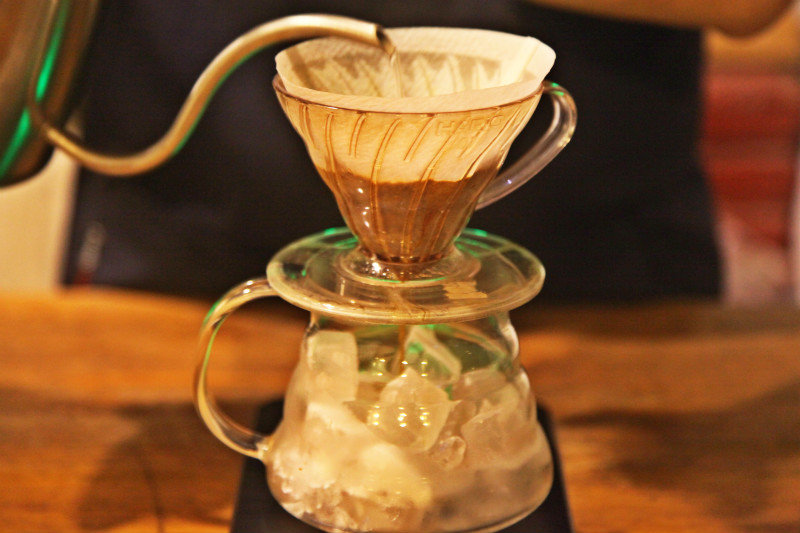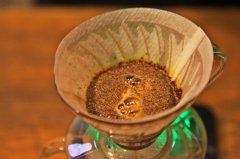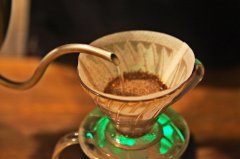Colombia Coca Cauca Maxiso Macizo Coffee production area introduces Colombia Maxiso Coffee

Professional coffee knowledge exchange more coffee bean information please follow the coffee workshop (Wechat official account cafe_style)
Colombian microbatch Colombia Microlot
Colombia Micro-batch small Farmer Program, which offers coffee farmers from several of Colombia's best producing areas, including Huila, Narino, Cauca, Tolima, etc., unlike many coffee farmers who grow Castillo varieties, small farmers plan to grow a wide range of traditional varieties such as Bourbon, Typica, Caturra, Catuai and so on. Since the average planting area of these small farmers is only a few hectares, the quantity that can be provided by each batch each year is only about 3000murmur4000 kilograms, and the average elevation of each smallholder is about 1500Mel 1800m.
Test card
Cauca province is one of the well-known boutique coffee producing areas in Colombia, bordering Nalinglong in the west and Vera province in the east. The 29 administrative districts where coffee is grown range from 1758 meters to 2100 Michael above sea level. Like the boutique coffee producing areas in southern Colombia, the climate, rainy season, volcanic soil and other factors have a high degree of homogeneity. A fixed rainfall cycle (the dry season from August to September is followed by a rich rainy season, Rain Water) provides favorable fruiting factors for coffee trees. High-intensity sunshine and low rainfall coincide with the flowering season (July-August), when it also leaves the equatorial windless zone, providing favorable flowering conditions for coffee trees. These factors also contributed to the concentrated harvest in the first quarter of the next year. Compared with other coffee-growing areas in Colombia, the climate is more variable in the daytime temperature: the average daily temperature is as low as 11 degrees, and the average temperature during the day is 18 degrees (the average temperature at night is 4 degrees). This sharp temperature difference between day and night is a boost to the growth of Coca Coffee. The low night average temperature caused by high altitude slows down the ripening of coffee beans, improves the acidity and gives special sweetness.
Sotara is a small town in the middle of Cauca, while the Sotara volcano belongs to the Andes, providing nutritious soil for coffee beans to grow. Coffee cultivation in this area covers an area of about 911 hectares and consists of mountainous areas and three well-known rivers: Caueta, Cauca and Magdalena.
■ countries: Colombia
■ producing area: Macizo, Cauca
■ altitude: 1880 m
■ treatment: washing
■ level: Excelso
■ variety: Caturra
■ flavor description: White grapes, almonds, spices, maple syrup, chocolate, good thickness
Macizo, located in south-central Colombia, is a nature reserve at the junction of Cauca and Vera, bordered by the province of Vera to the east, Cauca to the west and Nahlinglong to the southwest, which is also part of the South Andes. More than half of the whole mountain area is an ecosystem, with quite primitive forests. In addition to a number of volcanoes, there are also abundant species of animals and plants, up to 4646 meters above sea level. The basin of the block is also an important natural water source in Colombia, providing safe water for 70% of Colombian residents' livelihood and irrigation. This batch is selected from the Macizo mountain area on the eastern edge of Cauca Province. coffee is grown as high as 1880 meters above sea level and comes from the works of small farmer Jesus Alveiro Valencia Paz.
Important Notice :
前街咖啡 FrontStreet Coffee has moved to new addredd:
FrontStreet Coffee Address: 315,Donghua East Road,GuangZhou
Tel:020 38364473
- Prev

Original production of Ch'ire Ameli Forest Coffee from Hill Emily processing Plant in Sidamo Coffee production area
Professional coffee knowledge exchange more coffee bean information please follow the coffee workshop (Wechat official account cafe_style) Ethiopia Sidamo Hill Emily processing Plant G1 washing Ethiopia Sidamo Chire Ameli G1 Washed production area: Sidamo level: G1 treatment method: Washed Process washing altitude: 1900m varieties: Heirloom Sidamo
- Next

Columbia Huilan how to rush Columbia Santa Clara Manor Santa Clara Coffee Information
Professional coffee knowledge exchange more coffee bean information please follow the coffee workshop (Wechat official account cafe_style) Santa Clara Manor, Vera, Colombia washed Columbia Huila Finca Santa Clara washed flavor description: fresh Cunninghamia lanceolata, spice, cream, toffee, pecan, dark chocolate, body thick Columbia three Cody
Related
- Detailed explanation of Jadeite planting Land in Panamanian Jadeite Manor introduction to the grading system of Jadeite competitive bidding, Red bid, Green bid and Rose Summer
- Story of Coffee planting in Brenka region of Costa Rica Stonehenge Manor anaerobic heavy honey treatment of flavor mouth
- What's on the barrel of Blue Mountain Coffee beans?
- Can American coffee also pull flowers? How to use hot American style to pull out a good-looking pattern?
- Can you make a cold extract with coffee beans? What is the right proportion for cold-extracted coffee formula?
- Indonesian PWN Gold Mandrine Coffee Origin Features Flavor How to Chong? Mandolin coffee is American.
- A brief introduction to the flavor characteristics of Brazilian yellow bourbon coffee beans
- What is the effect of different water quality on the flavor of cold-extracted coffee? What kind of water is best for brewing coffee?
- Why do you think of Rose Summer whenever you mention Panamanian coffee?
- Introduction to the characteristics of authentic blue mountain coffee bean producing areas? What is the CIB Coffee Authority in Jamaica?

